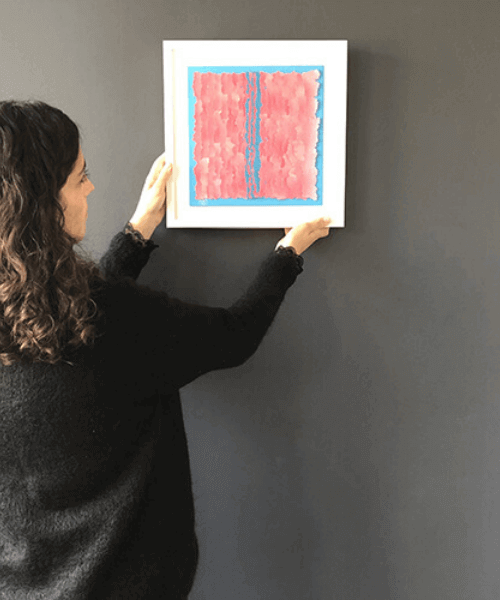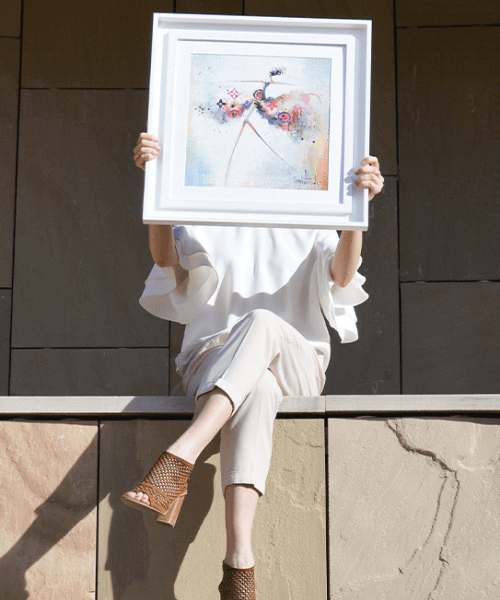Our tips for preserving an artwork
When you own works of art in your home, it is important to protect them and take good care of them.
The risks of degradation are numerous, such as hanging a painting over a radiator or displaying a watercolor in a bathroom.
It is essential to be informed about bad practices that lead to the degradation of your works of art.
Preserving a work of art is essential to enjoy it for a long time.
How do you buy art and store it well? Here are our tips for protecting your artwork.
Summary
- The main causes of deterioration of works of art
- Accidental causes
- Human causes
- Choose a suitable location
- Hang your work of art well
- Conservation of paintings
- Conservation of watercolors
- Applying varnish
The main causes of deterioration of artwork
In general, all materials are sensitive to sudden changes in humidity, temperature or vibration.
The ideal humidity for most works of art is around 55% for a temperature of around 20 ° C.
Each material can however have its own fragility.
To keep a work of art in good condition, it is important to be aware of the potential damage to the works. These are of three types: climatic, accidental and human.
Climatic causes
Works of art do not resist bad weather and thermal variations.
Light also degrades art objects. The colors fade and the surface turns yellow.
Watercolors and drawings are particularly sensitive.
To properly preserve a work of art, it is necessary to lower the light intensity in the rooms where you exhibit it.
The exhibition of works of art in the light
Prefer LED lighting to highlight your works.You can monitor exposure and discoloration with a luxmeter and radiometer.
Avoid direct sunlight and install blinds, shutters or UV films on windows that absorb the rays.


Accidental causes
Fire, floods and earthquakes are natural causes which cause considerable damage to artworks.Le feu, les inondations et les tremblements de terre sont des causes naturelles qui provoquent des dégâts considérables sur les œuvres d’art.
Human causes
Misuse, transport or maintenance of the work of art can affect its good conservation.
The manipulation of artworks
Avoid handling your prints with your hands. By putting your fingers on the work, you promote the development of mold.
Handle your works preferably with gloves.
Transport of artworks
When you need to move your artwork, choose carriers that specialize in moving and packing artwork.
Professionals have appropriate transport techniques and offer insurance for your items.
The use of cleaning products
Industrial cleaning products clog or discolor substrates.
Seek advice from a specialist for the maintenance of your artworks.
Choose a suitable location
If the sun damages works, so do heat sources and humidity.
To preserve colors, it is best not to hang your artwork on a wall exposed to direct sunlight, above a heater or fireplace.
Place the drawings, prints, engravings and watercolors in a glass frame and provide a hanging system on the back.
Beyond the aesthetic function, the frame protects the works from degradation linked to its environment.
Hang your work of art well
It may seem obvious, but always check that the attachment supports the weight of the work.
Indeed, a fall of the work could have a destructive effect.
A central fixing will suffice for a light painting.
On the other hand, heavier works will have to be fixed on each side to distribute the weight.
The use of picture rails facilitates the exhibition of your works.
Conservation of paintings
Avoid places that are too dry or too humid, such as the attic or cellar.
Do not place your paintings on the ground, but on a support in order to isolate them. Avoid stacking your artwork.
Abrupt temperature changes can damage your paintings.
Works forgotten in the back of a cellar risk irreversible damage.
Conservation of watercolors
Regardless of the technique, works of art on paper should preferably be stored in drawing boxes or exhibited under glass.
Artboard and glass are materials that protect watercolors from light.
Applying varnish
The application of varnish is recommended on paint, regardless of the technique, including acrylic.
The varnish prevents dust, dirt and scratches from damaging the paint layer.
It also promotes the preservation of pigments and colors.
Complementary articles
On the subject:
Buying art : understanding
find out more :



